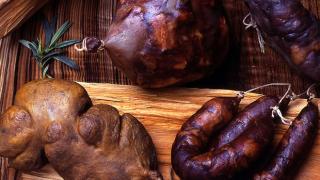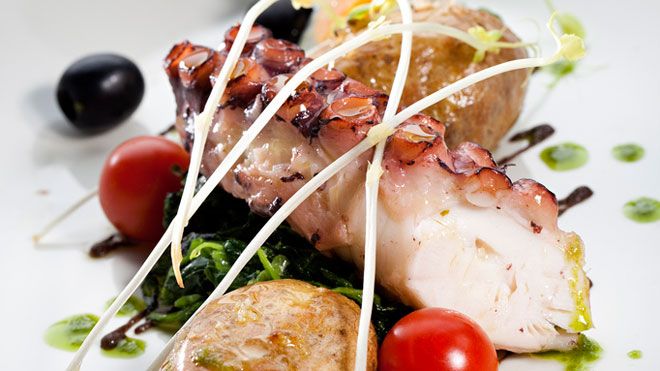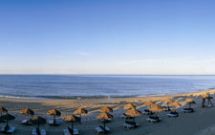The cuisine of Porto and the North

Don't miss
- sample the traditional Lamego bola (baked loaf stuffed with meats)
- taste the Easter meat loaf, particularly from Chaves
- taste the Pão-de-Ló sponge cake from Margaride, in Felgueiras
- try the corn bread, a type of bread made with maize and rye, which is a mandatory accompaniment for caldo verde. The one from Avintes is especially well-known
- savour the Mirandesa beef steak, typical of the Miranda do Douro region
- delight in a dish of kid with oven-baked rice, available throughout the north of Portugal
Porto and Northern Portugal, where the founding of the country was begun, are known for the honest and genuine character of their people and their tradition of hospitality. Among its attributes is a rich cuisine, accompanied by the region’s excellent wines.
The regional cuisine makes use of its natural resources, so caldo verde, appreciated all over the country, is a cabbage soup that originated here thanks to the fertile green fields of the region. In the west, bounded by the sea, the freshness and quality of the fish has a prominent place, as in all Portuguese cuisine, which prides itself in having the best fish in the world, in the opinion of renowned international chefs and gourmets. But in Porto and the North, trout, lamprey and shad are also fished in the rapid, abundant rivers, to the delight of connoisseurs.
It is a region of good grazing for the cattle that are bred here. The native breeds such as Barrosã, Mirandesa, Maronesa and Arouquesa have Protected Designation of Origin (PDO) classification, as do Terrincho Transmontano lamb and Barroso kids. Pork is also available in regional varieties, not only in quality sausages but also such dishes as rojões (braised pork chunks), sarrabulho (pork rice cooked in pig blood) and Porto-style tripe, perhaps the most famous dish of the northern capital. There is another dish too, made on the basis of a sandwich, that is a true institution: the francesinha. Back to pork, it should be noted that this mountainous region, especially in the northwest, is the largest area for breeding the bísaro pig. The sausages from Chaves and Mirandela are famous for using traditional manufacturing methods. The alheira sausage of Mirandela and Miranda do Douro is highly appreciated but has the peculiarity of not being made with pork, since it was intended for the Jewish population that lived here in the Middle Ages. You can buy them all in the Vinhais Smoked Meats Fair.
There are also game and cabidela dishes (cooked in blood). And cod dishes, part of the national cuisine, although many of the recipes were created in the north. Such is the case of Gomes de Sá and Zé do Pipo style cod, the recipes for cod from the Minho, Margarida da Praça cod (Viana do Castelo), Narcisa cod (Braga) and many others. Portuguese olive oil, which is produced in great quality in Trás-os-Montes, plays a part in all of them.
In terms of wine, the region could not be more blessed: it is crossed by the river Douro, whose landscape of vineyards is World Heritage; its capital Porto - also World Heritage - gave its name to the wine that leaves from here to every part of the world; and there is also the Vinho Verde region and that of Távora and Varosa. With such an illustrious list, it’s clear that in Porto and the North you will find a perfect wine to go with every dish. For appetizers, snacks, salads, fish and seafood, and white meats, there is a vast range of light, fresh vinho verdes and sparkling wines. For other meat dishes and stronger flavours, there is an equally huge range of robust wines from the Douro, originating mainly in the Upper Douro Valley.
From the other Douro sub-regions, there are the Port wine Tawnies, Colheitas and Vintages, making every moment a celebration. And you can make a toast on every special occasion with high quality sparkling wine, the Távora-Varosa region having a particularly long tradition and renown.
You cannot leave Porto and the North without tasting the sweets. In Braga, the highlight is the Abade Priscos crème caramel, and throughout the region crème brûlée, toucinho do céu (bacon from heaven, a convent dish made with eggs and sugar), rice pudding and aletria (sweet noodles). In some regional sweets, especially those from Trás-os-Montes, DOP registered olive oil or honey is used.
With enormously diverse landscapes, whether part of history, green nature or overlooking the blue sea, the choice is vast but always right.










 Explore
Explore 
 Remember and Share
Remember and Share 


